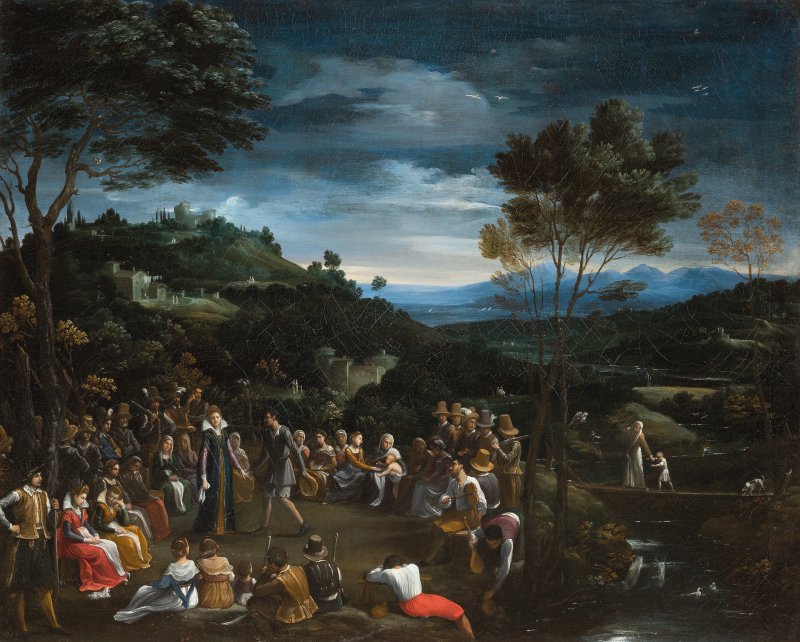THE PAINTING COUNTRY DANCE BY GUIDO RENI IS BACK IN CARDINAL SCIPIONE BORGHESE’S COLLECTION

The painting Country Dance, by Guido Reni, is back in Galleria Borghese.
Appeared on the antiques market in 2008 in London, attributed to an anonymous Bolognese artist, after the first attribution hypotheses the hand of Guido Reni was recognized, thanks also to the identification of the painting within the inventories and descriptions of Scipione Borghese’s collection. After its exhibition at the TEFAF in March 2020 at the Fondantico gallery, the work was purchased by the Galleria Borghese thus achieving the exceptional recovery of a long-lost painting and its definitive return to Italy.
The scene depicts a country fete: a dance, accompanied by the music of the lute and the vjola da braccio, organized by a group of countrymen and benevolently attended by several local ladies and gentlemen. The figures are seated in a circle, in a clearing amidst trees, next to which a stream is flowing. In the center, a young rustic is inviting a lady to begin the dancing. We note the varied poses of the figures. A somewhat bored lady is turning towards her neighbor, while on the opposite side two women are taking care of a child; the lute player has paused take one of the flasks left to cool on the bank. The hilly landscape is dotted with castles, farms, and a small church. In a detail of the work, on a dark and cloudy sky, the painter seems to want to demonstrate his ability: two flies resting high up on the canvas, almost as if urging the viewer to whisk them away with their hand.
The documented provenance of the painting from Scipione Borghese’s collection enables us to add an important detail to the fundamental matter of the relations between the Borghese family and Guido Reni. The cardinal wanted to make Reni his court painter, considering him – after the death of Annibale Carracci – the most important artist in Rome. The Borghese family, in the person of Pope Paul V, entrusted him with the frescos of The Pauline Chapel in Santa Maria Maggiore and commissioned one of his greatest masterpieces, the Aurora, in what is now the Pallavicini-Rospigliosi garden house, Cardinal Scipione Borghese’s first construction undertaking and residence.
Confirming this predilection, the collection included more than one work by the artist. The Galleria still possesses another major work by Reni, completely different with regard to its genre and subject: the Moses with the Tablets of the Law, from the artist’s mature period.
Reni’s conversance with the landscape was previously practically unknown.
It is not mentioned in the sources, where his trials in the major genres, with an elevated and ideal tone, emerge. The painter devoted himself to this genre – soon to be abandoned – during the first few years of his stay in Rome. The construction of a painting like the Country Dance is still based on the Bolognese culture of the Carracci, in particular Annibale’s, and echoes of Nicolò dell’Abate’s landscapes, dating it to 1601-02. This important landscape painting thus contributes to our knowledge of Reni’s artistic path and his different fields of experimentation.
As soon as possible after its arrival – in accordance with the decisions on the reopening of museums – the painting will be presented to the public, accompanied by initiatives elucidating its origin and its place in the context of Rome in the early 17th century.